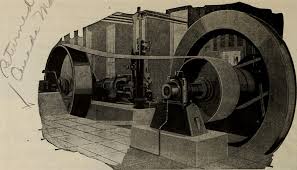A rubber conveyor belt is an essential industrial item. The product essentially consists of various fabrics like all cotton, cotton/nylon, rayon/nylon, all synthetic, etc. with a cover of various rubber grades like oil resistant, flame resistant, etc. A rubber conveyor belt is a system of pulleys with a long loop of fabric or other material stretched between them.
Usually, at least, one of the pulleys is motorized to pull the belt along with it. They are used to conveniently move heavy objects from one part of a processing facility to another. They can be extremely complex or quite simple. The design of the belt is an essential determining factor in the service life of the belt in any particular application.
Table of Contents
8 Steps to Start Conveyor Belt Manufacturing Business
1. Understand the Rubber Conveyor Belt Market Potential
The demand for the conveyor belt is increasing steadily with the rapid industrialization in the Country. These belts are commonly used for industrial purposes in thermal plants, fertilizer plants, railways, chemical plants, etc. There has been an increased need for conveyor belt servicing activities.
The typical lifespan of a conveyor belt product varies from two to five years. After this, there is a need for replacement or repair work on the conveyor belt or part of the conveyor belt.
The growth in production in the Coal Mining industry, which is a major end-user of conveyor belts, is expected to drive higher demand for conveyor belts during the period 2020-2025.
We expect the growth in these industries to drive higher demand for conveyor belts in India in the coming years. Rubber conveyor belt manufacturing is a techno-commercially profitable investment opportunity for entrepreneurs.
2. Registration & Licenses
In starting a rubber conveyor belt manufacturing business, you will need to obtain different licenses and registrations in India. These are as follows:
- Register your business with ROC according to your ownership and liability pattern.
- Obtain Trade License from the Municipal authority.
- Apply for Udyog Aadhaar MSME registration. It is not mandatory. However, it will help you in getting finance from the bank.
- Apply for GST Registration Number.
- Obtain NOC from the State Pollution Control Board.
- Apply for BIS Certification. The specifications in conformation to IS 1891.
3. Machinery & Equipment
You will need to procure different machines for the manufacturing operation. Such as
- Rubber mixing mill 16”x48” with chilled cast iron rolls and standard accessories
- Rubber Dispersion Kneader
- Calender machine 8”x26” with hollow rolls, duly ground, with gunmetal bushes, gearbox, and other accessories
- Farming table
- Size-cutting machine with an electric motor
- Wrapping machine
- Hydraulic mixture machine
- Hydraulic press with all accessories
- Boiler
- Generator
- Testing equipment like Tensile Testing machine, Ageing Chamber, Ross Scoti flex test machine.
4. Rubber Conveyor Belt Manufacturing Process
Generally, you can produce rubber conveyor belts by two methods. One method involves rubberizing the cloth with a calendar machine. And the second method involves rubberizing the cloth with a spreading machine.
In the case of rubberizing by calendar machine, the production is very high. Additionally, there are no costs involved on account of solvent losses.
Read: Best Small Manufacturing Business Ideas
After rubberizing, transfer the cloth in the requisite number of layers to the Hydraulic press for vulcanizing to achieve the desired thickness. Different types of conveyor belting cover compositions are available for heavy-duty, medium-duty, light-duty, heat resistant types of belts.
Some of the basic steps are listed below:
- Material Preparation: Mix and prepare the rubber compound by blending rubber, fillers, and additives. The mixture is then extruded into sheets or strips.
- Fabrication: Apply fabric layers to the rubber sheets to enhance the belt’s strength and durability. This process involves the use of specialized equipment and techniques.
- Vulcanization: Cure the assembled conveyor belt in a vulcanizing press to bond the rubber and fabric layers. This process ensures the belt’s integrity and enhances its performance.
- Finishing and Quality Control: Trim and finish the conveyor belt, ensuring it meets the required dimensions and quality standards. Conduct rigorous quality control checks at various stages of the manufacturing process to maintain consistent product quality.
5. Arrange Funds
You will need moderate investment to start a rubber conveyor belt manufacturing business. If you are short on funds, it is essential to apply for a business loan. Also, apply for a credit card to meet small-time expenses.
6. Raw Material For Rubber Conveyor Belt Manufacturing
In the manufacturing operation, you will need to procure different types of raw materials. Such as raw rubber, synthetic rubber, whiting, processing oil, zinc oxide, stearic acid, rosin, anti-oxidant, accelerator, sulfur, pine tar, carbon black, canvas/fabric, color/paints, and pigments. You will also need to procure the packaging consumables. In rubber conveyor belt manufacturing, you will need to maintain quality standards as per the client’s specifications.
7. Setup Manufacturing Facility
Set up a well-equipped manufacturing facility that meets the production requirements of conveyor belts. Consider factors such as factory size, layout, machinery, and equipment needed for the manufacturing process. Invest in advanced technologies and automation to improve efficiency and productivity.
8. Marketing and Distribution
Develop a comprehensive marketing strategy to promote your conveyor belt brand. Establish relationships with manufacturers, distributors, and end-users in industries such as mining, manufacturing, logistics, and agriculture. Showcase the durability, reliability, and performance benefits of your conveyor belts through targeted marketing campaigns, and participation in trade shows, and industry events.
Discover more from NEXTWHATBUSINESS
Subscribe to get the latest posts sent to your email.



